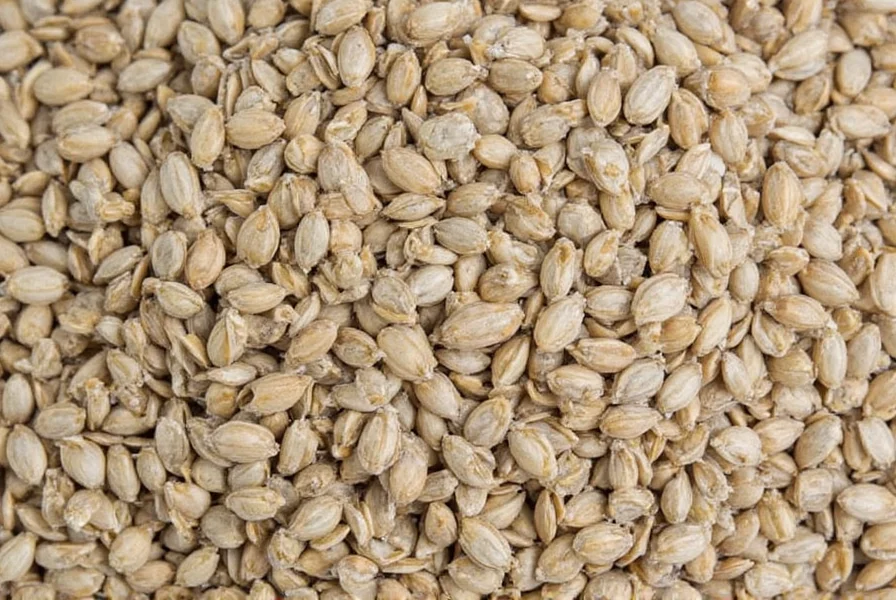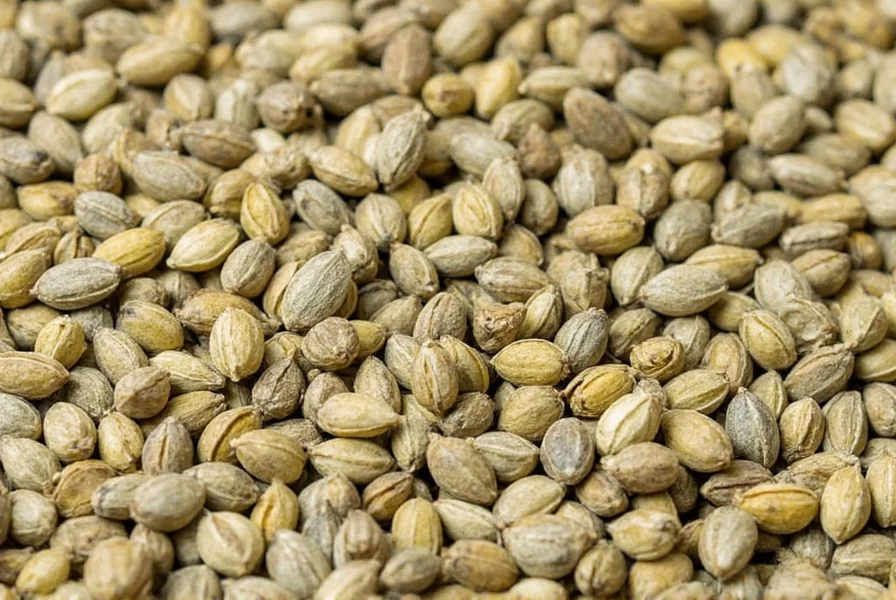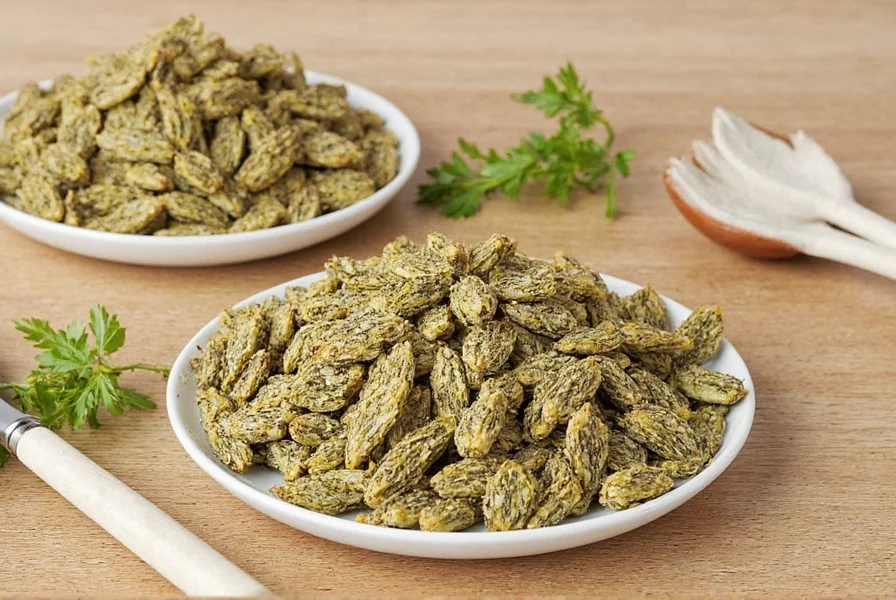Understanding the precise flavor profile of fennel seeds helps home cooks and professional chefs alike incorporate this versatile spice effectively. While often compared to anise, fennel seed offers a more complex sensory experience that varies based on preparation method and culinary context.
The Complete Flavor Profile of Fennel Seeds
Fennel seeds (Foeniculum vulgare) deliver a multi-dimensional taste experience that explains their popularity across global cuisines. When you bite into a raw fennel seed, you'll first notice:
- Sweet licorice foundation - The dominant note comes from anethole, the same compound found in anise and star anise
- Citrus undertones - A bright, lemony quality that distinguishes it from pure anise
- Warm herbal finish - Subtle grassy, green notes that add complexity
- Mild peppery aftertaste - A gentle heat that emerges after the initial sweetness
Unlike anise seeds which deliver a more intense, one-dimensional licorice punch, fennel seeds provide a balanced flavor profile that works well in both sweet and savory applications. This versatility makes them valuable in Mediterranean, Indian, and Chinese cooking traditions.
| Flavor Characteristic | Intensity (1-5) | Comparison to Similar Spices |
|---|---|---|
| Sweet licorice | 4 | Milder than anise (5), stronger than star anise (3) |
| Citrus notes | 3 | More pronounced than dill (2), less than lemon verbena (4) |
| Peppery finish | 2 | Subtler than black pepper (5), similar to caraway (2) |
| Herbal quality | 3 | More pronounced than anise (1), less than fresh dill (4) |
How Preparation Changes Fennel Seed Flavor
The taste of fennel seeds transforms significantly based on how you prepare them:
Raw fennel seeds deliver the most pronounced licorice flavor with noticeable citrus notes. The texture is slightly crunchy with a cool sensation as the essential oils release in your mouth.
Toasted fennel seeds undergo a remarkable transformation. The heat intensifies the natural sweetness while mellowing the licorice quality. Toasting also brings out nutty, almost coffee-like undertones that make them particularly valuable in spice blends. For optimal flavor development, toast seeds in a dry skillet over medium heat for 2-3 minutes until fragrant.
Ground fennel seed provides immediate flavor impact but loses its aromatic compounds more quickly than whole seeds. The ground form works best when added later in the cooking process to preserve its delicate flavor profile.

Culinary Applications Based on Flavor Profile
Understanding what fennel seed taste like helps determine its best culinary applications. The sweet-licorice-citrus profile makes it particularly effective in:
- Savory dishes - Balances richness in sausage recipes, complements tomato-based sauces, and enhances roasted vegetable dishes
- Sweet applications - Adds complexity to biscotti, fruit compotes, and certain cake recipes without overwhelming other flavors
- Beverages - Creates distinctive flavor in herbal teas and certain liqueurs
- Spice blends - Contributes essential flavor to Chinese five-spice powder, Indian panch phoron, and Italian sausage seasoning
When substituting fennel seed in recipes, remember that its flavor is more nuanced than pure anise. Use about 25% less anise seed when substituting for fennel to avoid overpowering other ingredients. The citrus notes in fennel seed make it particularly effective in fish dishes where lemon would normally be used.
Sensory Experience Timeline
The taste experience of fennel seed evolves over time:
- Initial contact - Sweet, almost honey-like impression with immediate citrus brightness
- Mid-palate - Licorice flavor emerges, but remains balanced by the citrus notes
- Finish - Warm, slightly peppery sensation with lingering sweet-citrus aftertaste
- Aftertaste - Clean, refreshing quality that makes fennel seeds traditional breath fresheners in many cultures
This evolving flavor profile explains why many Indian restaurants offer fennel seeds after meals—they cleanse the palate while providing digestive benefits.

Common Flavor Pairings
Chefs consistently pair fennel seeds with ingredients that complement their unique flavor profile:
- Fish and seafood - The citrus notes enhance ocean flavors without requiring additional lemon
- Tomatoes - Creates a natural synergy in sauces and stews
- Apples and pears - Complements the natural sweetness while adding complexity
- Pork and sausage - Traditional pairing where fennel's sweetness balances meat richness
- Chocolate - Surprising but effective in certain dessert applications
When working with fennel seeds, remember that their flavor intensifies with cooking time. Add them early for deeper integration into dishes, or later for more pronounced individual flavor notes.
FAQs About Fennel Seed Flavor
Is fennel seed the same as anise seed?
No, fennel seed and anise seed come from different plants though they share the compound anethole that creates similar licorice flavors. Fennel seed has a milder, sweeter profile with noticeable citrus notes, while anise seed delivers a more intense, one-dimensional licorice flavor. Visually, fennel seeds are larger, greener, and more oval than the smaller, grayish-brown anise seeds.
Why do fennel seeds taste like licorice?
Fennel seeds contain anethole, an organic compound that activates the same taste receptors as those stimulated by licorice root. This compound makes up 60-70% of fennel seed's essential oil content, creating that characteristic sweet, licorice-like flavor. The specific ratio of anethole to other compounds in fennel gives it a more complex profile than pure licorice.
Do fennel seeds taste bitter?
Raw fennel seeds have a very mild bitterness that most people perceive as part of their complex flavor profile rather than an unpleasant bitter taste. However, over-toasting fennel seeds can create noticeable bitterness. When used appropriately in recipes, fennel seeds contribute sweetness rather than bitterness, which is why they work well in both sweet and savory dishes.
How does toasting affect fennel seed flavor?
Toasting transforms fennel seed flavor by intensifying the natural sweetness while mellowing the licorice notes. The heat causes chemical changes that develop nutty, almost coffee-like undertones and reduces the initial citrus brightness. Properly toasted fennel seeds (2-3 minutes in a dry skillet) offer a more complex, rounded flavor that integrates better into dishes compared to raw seeds.
Can I substitute fennel seeds if I don't like licorice flavor?
If you dislike licorice flavors, fennel seeds might not be the best substitute. However, in small quantities, they can add complexity without overwhelming other flavors. For recipes where fennel is a minor ingredient, consider substitutes like dill seed (for fish dishes) or a pinch of celery seed. In sausage recipes, caraway seeds provide a similar texture with a completely different flavor profile that lacks the licorice notes.











 浙公网安备
33010002000092号
浙公网安备
33010002000092号 浙B2-20120091-4
浙B2-20120091-4